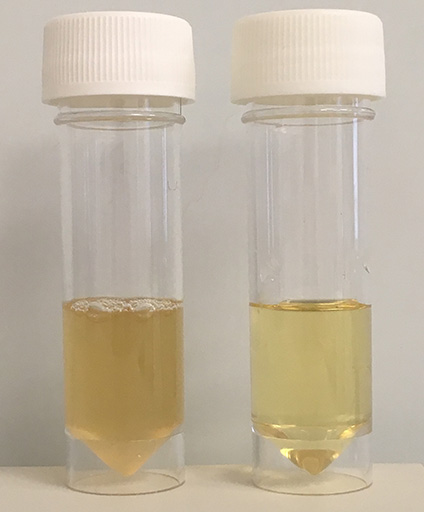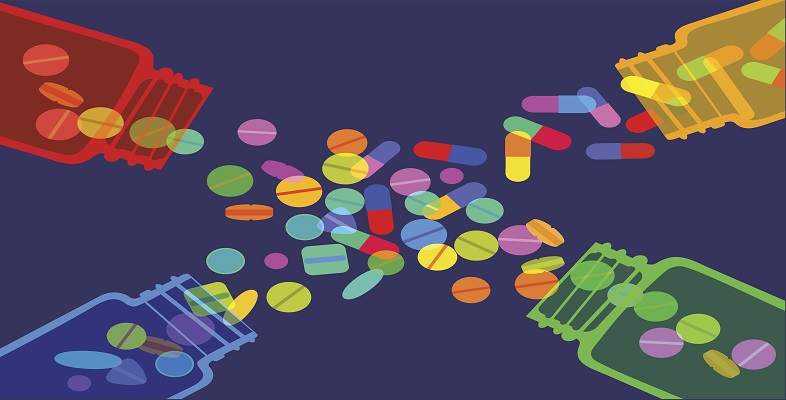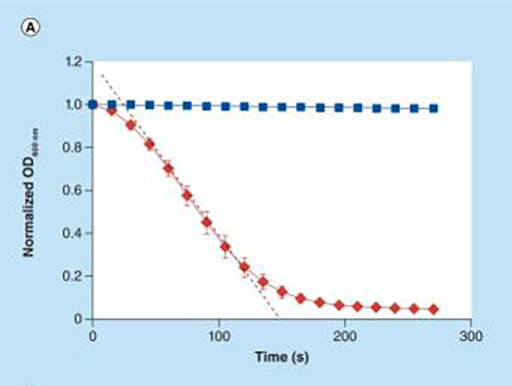2.2 Lysin treatment
Would you expect Gram-negative or Gram-positive bacteria to be more susceptible to phage lysins? You may need to revisit Week 2 Section 4.1 to remind yourself of the differences between Gram-negative and Gram-positive bacteria.
In Gram-negative bacteria, the peptidoglycan layer is protected by an outer membrane. In contrast, Gram-positive bacteria do not have an outer membrane, so disrupting the peptidoglycan layer is more likely to cause these bacteria to burst.
In the next activity, you will look at data from an experiment measuring the effect of phage lysin treatment on bacteria.
Activity 4 Measuring the effect of phage lysins on bacteria
In this experiment, the presence of intact bacteria is measured using light.
Turbidity can be used as a measure of the density of bacterial cells in a sample (Figure 5).

Microbiologists use spectrophotometers to shine light through bacterial samples to determine their turbidities. Samples with a high bacterial cell density will appear more turbid than samples with a low bacterial cell density.
In this experiment, the turbidity of two bacterial samples was measured over 5 minutes (300 seconds) using a spectrophotometer. Sample 1 (orange line in Figure 6) was treated with a phage lysin while sample 2 (blue line in Figure 6) was not. Figure 6 shows the results of the experiment (Schmelcher et al., 2012). The turbidity of the sample is plotted on the vertical y-axis (labelled ‘normalised OD (optical density)’), while the time in seconds is plotted on the horizontal x-axis.
Study the graph carefully and then answer the following questions.
- What happens to the turbidity of the lysin-treated sample over time?
Answer
At the start of the experiment, the sample has a turbidity of 1.0. As the time progresses, the turbidity of the sample decreases until it reaches almost 0 at around 200 seconds.
- What happens to the density of the bacterial cells in this sample during the experiment?
Answer
At the start of the experiment, the bacterial cell density is high but, as the experiment continues, the cell density decreases
- Why?
Answer
The phage lysin lyses the bacteria, killing them so that the sample no longer appears turbid.
- Does the turbidity of the sample without lysin change during the experiment?
Answer
No. The turbidity of the untreated sample does not change.
- Why do you think this sample has been included in the experiment?
Answer
This sample shows that the decrease in turbidity in the sample during the experiment is caused by the presence of lysin in the sample and not by another factor.
In this section, you looked at one alternative to antibiotics that works by killing bacteria. Next you will look at research into the natural defences of a bacterium called Bdellovibrio bacteriovorus which has the potential to be exploited as another bactericidal alternative to antibiotics.

